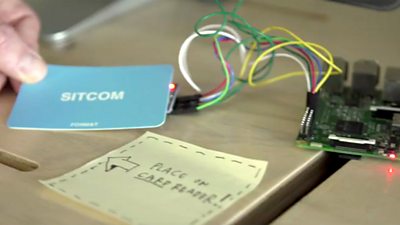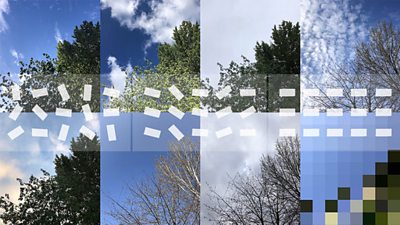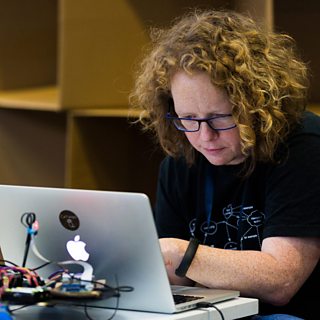
In the project we're exploring as widely as possible what the future of TV could and should become in the next ten to fifteen years. To do this we're creating many partial experience prototypes - objects that induce an impression or feeling about what it would be like to use them - but made very quickly and cheaply so that we can try out many different ideas and approaches.
We started with design fictions (in the form of packaging and adverts for pretend products and services, including an ad for holographic TV watching friends, a forum thread that described peoples' experiences of a personalised soap opera, and a packet of AI television recommendation bees). After showing these to people, we then progressed to "half-resolution prototypes" (squint and they feel real), including a box with a big red button you press to get a random programme, a TV watching teddy companion, and an ambient notifications display. Instead of settling very quickly on a particular technical approach, we use these techniques to find out what our potential users think of the ideas, and then cull or modify poor ideas, and expand on aspects of the good ones. A few weeks ago we took nine half resolution prototypes to the , where we met some children who were visiting for . Young people will hopefully the 成人快手's audience of the future so we were keen to find out what they thought. The video shows how much people enjoy playing with physical prototypes, and how much we enjoyed hearing what people thought of them.
The prototypes are physical representations of our research into why and how people watch television and what they like and dislike about it, but they are a only a starting point to explore as many possibilities as we can. There are thousands of ideas that are never considered because there isn't enough time or money. This is a method for lowering the cost of making our prototypes interesting enough for people to want tell us what they like and dislike about the ideas behind them.
In the same way that people find unexpected uses for technology in their lives once there's something there for them to use, we've found that when presented with objects that look like products or services, people think about how they might fit into their lives, and come up with aspects or consequences that we wouldn't have thought of. This way of working sends us down paths we might not have considered if we had limited ourselves to certain technologies earlier, spent more time perfecting the prototypes, shown them to fewer people, or talked with a less diverse group of people. It helps us get out of our own bubble and avoid the herd behaviour that's so common in technology. This is similar to , but with a very extensive notion of "users":
- Any worthwhile thing you work on is bound to be a : building changes how you think, changes how your users think, changes the world around it.
- Anyone can envisage something, plan it out, get someone else to make it, but that鈥檚 missing a trick; software is now so trivial to make you can and learn from them.
- Anyone can now make a thing. But making the right thing, that's the trick.
Using the feedback we get from talking to people about these prototypes we will write a set of recommendations about the character of future television interfaces. Our current area of interest is how to make the process of choosing what to watch a central and fun aspect of the experience rather than an afterthought, and this came directly from feedback from people - especially young people - we have shown our prototypes to.
We are at this week to show them to a completely different group, and you'll be able to read more about the prototypes and the process we used to get to them in our and in a forthcoming white paper.
We'd like to thank Spencer Marsden from the Blue Room, , who directed the video, the organisers of 成人快手 School Report, and especially all the young people we spoke to for their help.
-

Internet Research and Future Services section
The Internet Research and Future Services section is an interdisciplinary team of researchers, technologists, designers, and data scientists who carry out original research to solve problems for the 成人快手. Our work focuses on the intersection of audience needs and public service values, with digital media and machine learning. We develop research insights, prototypes and systems using experimental approaches and emerging technologies.
